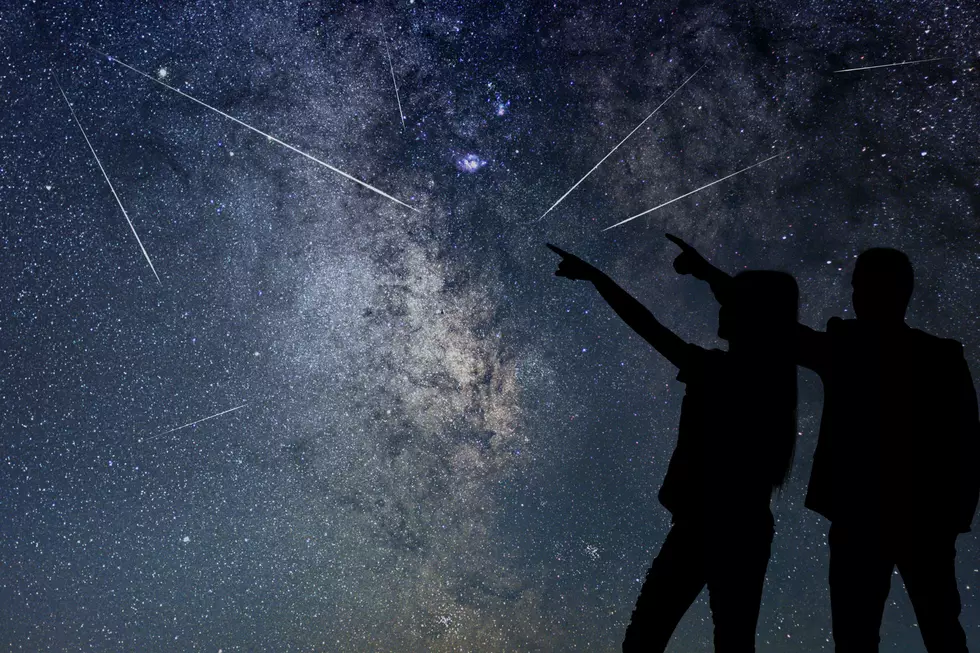
Catch Pieces of Halley’s Comet in Magnificent May Meteor Shower
Halley's Comet won't fly by earth until 2061 but you can see pieces of it in the final meteor shower of the spring.
The last time Halley's Comet passed by the sun was in 1986. It's only visible once every 75 years, but there's another way to enjoy the comet. Or at least parts of it.
Eta Aquarid Meteor Shower
The Eta Aquarid meteor shower will peak during the early hours of Friday, May 6 between 3 AM and 5 AM. You could see anywhere from 10 and 30 meteors per hour, according to Accuweather.
Most meteor showers are created when the Earth plows through a field of debris left behind by comets orbiting the sun. Most of the debris is small, generally the size of a small pebble or grain of sand, but when it hits Earth's atmosphere, it burns up and emits a bright flash of light.
Meteor Shower vs Comet
Meteor showers or shooting stars are different than seeing a comet pass by.
A flash of light from a meteor only lasts a few seconds, while a comet can be seen for weeks, sometimes months, as it appears to slowly fly through the night sky.
Meteor Shower Weather
The problem will be Mother Nature, once again. It looks like Central New York will be mostly cloudy during the peak of the Eta Aquarid meteor shower on Friday, May 6. If we miss this one, we'll have to wait until the middle of summer. The Southern Delta Aquarids and the alpha Capriconids are at the end of July.
Total Lunar Eclipse
There's also a total lunar eclipse in May. The Sun, Earth, and the moon will pass in a straight line on May 15/16, 2022. Anyone living in the Eastern and Central time zones will get to see the entire event.
Eclipse Timing (EST)
Partial umbral eclipse begins: 10:27 PM - Moon enters the earth’s shadow.
Total lunar eclipse begins: 11:29 PM - Moon turns dark orange or red.
Greatest eclipse: 12:11 AM - Mid-point of the eclipse.
Total lunar eclipse ends: 12:53 AM - Moon begins to leave the shadow.
Partial umbral eclipse ends: 1:55 AM - Moon completely exits earth’s shadow.
Next Solar Eclipse
You won't want to miss the next total solar eclipse that'll be right over parts of Central New York.
On Monday, April 8, 2024, more than 31 million people will get to see the next total solar eclipse, including millions in New York. That's more than double the 12 million that were in the path of the 2017 eclipse, according to Astronomy.com.
Dallas and Austin, Texas; Little Rock, Arkansas; Indianapolis, Indiana; Cleveland and Dayton, Ohio; Buffalo, New York; Burlington, Vermont; and Montreal, Quebec; all are situated in the path of totality.
More Impressive Eclipse
The last eclipse on August 21, 2017, won't be anywhere near as impressive or as long as the one that we'll see in 2024.
Totality will last over four minutes for part of the path across the U.S., nearly double the length of the 2017 eclipse that lasted just over two minutes.
Mother Nature may not cooperate though. April is often a very cloudy month, especially north.
The odds of it being cloudy on this day increase farther north and east based on climatology.
Get Your Glasses
During the last eclipse in 2017, glasses to properly view the phenomenon without hurting your eye were in short supply. Experts suggest buying eclipse glasses now and keeping them in a safe place to enjoy the celestial show when April 8, 2024, rolls around.
If you miss it, you'll have to wait until 2045 when the next total solar eclipse passes by. And who knows if the path will be this close to Central New York again.

